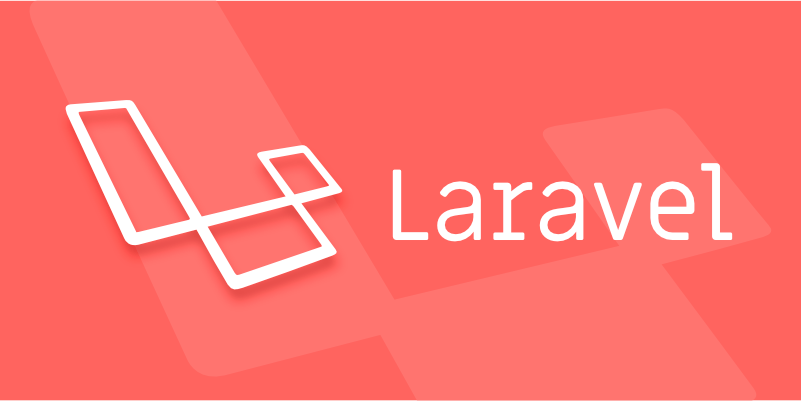The steps to sending mail in Laravel include configuring the mail driver, creating a Mailable class, and sending mail. First, configure MAIL\_MAILER to smtp, mailgun, or log in the .env file, and fill in the corresponding parameters. After modification, run php artisan config:clear to take effect; then create the Mailable class through php artisan make:mail WelcomeEmail, and set the sender and view in the build() method; finally use Mail::to($user->email)->send(new WelcomeEmail($user)) to send the email, or you can also call cc(), bcc() in a chain or use later() to delay the sending. It is recommended to use log driver or Mailtrap test during development, and check logs and configurations to ensure that the email is sent normally.

Sending emails in Laravel is not complicated, it mainly involves configuration and use. Laravel provides very convenient Mail facade and Mailable classes, allowing you to easily build and send mail.

Configure the mail driver
To send an email, you must first tell Laravel what method you plan to send. Common ones such as SMTP, Mailgun, Sendmail, etc. can all be configured in .env files.
- SMTP is the most commonly used method of sending emails. You need to fill in the host address, port, username and password.
- Services like Mailgun or SparkPost are suitable for projects with high sending demands and provide API interfaces.
- Log (log) or Array (array) is a simulation method in the development stage and will not actually send emails.
Example of modifying .env file:

MAIL_MAILER=smtp
MAIL_HOST=smtp.mailtrap.io
MAIL_PORT=2525
MAIL_USERNAME=your-mailtrap-username
MAIL_PASSWORD=your-mailtrap-password
MAIL_ENCRYPTION=tls
MAIL_FROM_ADDRESS=from@example.com
MAIL_FROM_NAME="${APP_NAME}" Remember to run php artisan config:clear after modifying the configuration to clear the cache to ensure that the new configuration takes effect.
Create a Mailable class
The Mailable class is used in Laravel to encapsulate mail content. You can generate one via the command line:

php artisan make:mail WelcomeEmail
This command will create a class file in app/Mail/WelcomeEmail.php , where you can set themes, views, data, etc.
For example, pass in user information in the constructor and specify the view to use in build() method:
public function build()
{
return $this->from('example@example.com')
->view('emails.welcome');
} View files are usually placed in resources/views/emails directory. You can use the Blade template syntax to render email content.
Send an email
After you have prepared the Mailable class, you can send emails through Mail::to() method. for example:
use Illuminate\Support\Facades\Mail; use App\Mail\WelcomeEmail; Mail::to($user->email)->send(new WelcomeEmail($user));
You can also call cc() or bcc() in a chain to add cc or pass:
-
Mail::to($user)->cc($admin)->send(new WelcomeEmail($user)); -
Mail::to($user)->bcc($manager)->send(new WelcomeEmail($user));
If delayed sending is required, you can use Laravel's queue function to cooperate with later() method.
Tips: Testing and debugging
During local development, it is recommended to use the log driver first, so that the email content will be recorded in the log instead of being sent out.
If you are using Mailtrap or Mailhog , you can check whether the email is sent successfully and whether the content is correct in their web interface.
Sometimes you will find that the email has not been received, but the program has not reported any errors. You should check this time:
- Whether the correct MAILER and configuration items are used
- Was it misjudged as spam
- Is the encrypted connection enabled (TLS/SSL)
- Whether there is any connection failure or authentication error in the log
Basically that's it. Although there are not many steps in the entire process, the details are easy to ignore, especially the configuration part. As long as the configuration is correct, the rest is to write the email template and logic, and sending emails will be completed.
The above is the detailed content of How to send an email in Laravel?. For more information, please follow other related articles on the PHP Chinese website!

Hot AI Tools

Undress AI Tool
Undress images for free

Undresser.AI Undress
AI-powered app for creating realistic nude photos

AI Clothes Remover
Online AI tool for removing clothes from photos.

Clothoff.io
AI clothes remover

Video Face Swap
Swap faces in any video effortlessly with our completely free AI face swap tool!

Hot Article

Hot Tools

Notepad++7.3.1
Easy-to-use and free code editor

SublimeText3 Chinese version
Chinese version, very easy to use

Zend Studio 13.0.1
Powerful PHP integrated development environment

Dreamweaver CS6
Visual web development tools

SublimeText3 Mac version
God-level code editing software (SublimeText3)

Hot Topics
 Creating Custom Validation Rules in a Laravel Project
Jul 04, 2025 am 01:03 AM
Creating Custom Validation Rules in a Laravel Project
Jul 04, 2025 am 01:03 AM
There are three ways to add custom validation rules in Laravel: using closures, Rule classes, and form requests. 1. Use closures to be suitable for lightweight verification, such as preventing the user name "admin"; 2. Create Rule classes (such as ValidUsernameRule) to make complex logic clearer and maintainable; 3. Integrate multiple rules in form requests and centrally manage verification logic. At the same time, you can set prompts through custom messages methods or incoming error message arrays to improve flexibility and maintainability.
 Adding multilingual support to a Laravel application
Jul 03, 2025 am 01:17 AM
Adding multilingual support to a Laravel application
Jul 03, 2025 am 01:17 AM
The core methods for Laravel applications to implement multilingual support include: setting language files, dynamic language switching, translation URL routing, and managing translation keys in Blade templates. First, organize the strings of each language in the corresponding folders (such as en, es, fr) in the /resources/lang directory, and define the translation content by returning the associative array; 2. Translate the key value through the \_\_() helper function call, and use App::setLocale() to combine session or routing parameters to realize language switching; 3. For translation URLs, paths can be defined for different languages ??through prefixed routing groups, or route alias in language files dynamically mapped; 4. Keep the translation keys concise and
 Working with pivot tables in Laravel Many-to-Many relationships
Jul 07, 2025 am 01:06 AM
Working with pivot tables in Laravel Many-to-Many relationships
Jul 07, 2025 am 01:06 AM
ToworkeffectivelywithpivottablesinLaravel,firstaccesspivotdatausingwithPivot()orwithTimestamps(),thenupdateentrieswithupdateExistingPivot(),managerelationshipsviadetach()andsync(),andusecustompivotmodelswhenneeded.1.UsewithPivot()toincludespecificcol
 Sending different types of notifications with Laravel
Jul 06, 2025 am 12:52 AM
Sending different types of notifications with Laravel
Jul 06, 2025 am 12:52 AM
Laravelprovidesacleanandflexiblewaytosendnotificationsviamultiplechannelslikeemail,SMS,in-appalerts,andpushnotifications.Youdefinenotificationchannelsinthevia()methodofanotificationclass,andimplementspecificmethodsliketoMail(),toDatabase(),ortoVonage
 Understanding and creating custom Service Providers in Laravel
Jul 03, 2025 am 01:35 AM
Understanding and creating custom Service Providers in Laravel
Jul 03, 2025 am 01:35 AM
ServiceProvider is the core mechanism used in the Laravel framework for registering services and initializing logic. You can create a custom ServiceProvider through the Artisan command; 1. The register method is used to bind services, register singletons, set aliases, etc., and other services that have not yet been loaded cannot be called; 2. The boot method runs after all services are registered and is used to register event listeners, view synthesizers, middleware and other logic that depends on other services; common uses include binding interfaces and implementations, registering Facades, loading configurations, registering command-line instructions and view components; it is recommended to centralize relevant bindings to a ServiceProvider to manage, and pay attention to registration
 Understanding Dependency Injection in Laravel?
Jul 05, 2025 am 02:01 AM
Understanding Dependency Injection in Laravel?
Jul 05, 2025 am 02:01 AM
Dependency injection automatically handles class dependencies through service containers in Laravel without manual new objects. Its core is constructor injection and method injection, such as automatically passing in the Request instance in the controller. Laravel parses dependencies through type prompts and recursively creates the required objects. The binding interface and implementation can be used by the service provider to use the bind method, or singleton to bind a singleton. When using it, you need to ensure type prompts, avoid constructor complications, use context bindings with caution, and understand automatic parsing rules. Mastering these can improve code flexibility and maintenance.
 Handling exceptions and logging errors in a Laravel application
Jul 02, 2025 pm 03:24 PM
Handling exceptions and logging errors in a Laravel application
Jul 02, 2025 pm 03:24 PM
The core methods for handling exceptions and recording errors in Laravel applications include: 1. Use the App\Exceptions\Handler class to centrally manage unhandled exceptions, and record or notify exception information through the report() method, such as sending Slack notifications; 2. Use Monolog to configure the log system, set the log level and output method in config/logging.php, and enable error and above level logs in production environment. At the same time, detailed exception information can be manually recorded in report() in combination with the context; 3. Customize the render() method to return a unified JSON format error response, improving the collaboration efficiency of the front and back end of the API. These steps are
 Strategies for optimizing Laravel application performance
Jul 09, 2025 am 03:00 AM
Strategies for optimizing Laravel application performance
Jul 09, 2025 am 03:00 AM
Laravel performance optimization can improve application efficiency through four core directions. 1. Use the cache mechanism to reduce duplicate queries, store infrequently changing data through Cache::remember() and other methods to reduce database access frequency; 2. Optimize database from the model to query statements, avoid N 1 queries, specifying field queries, adding indexes, paging processing and reading and writing separation, and reduce bottlenecks; 3. Use time-consuming operations such as email sending and file exporting to queue asynchronous processing, use Supervisor to manage workers and set up retry mechanisms; 4. Use middleware and service providers reasonably to avoid complex logic and unnecessary initialization code, and delay loading of services to improve startup efficiency.






